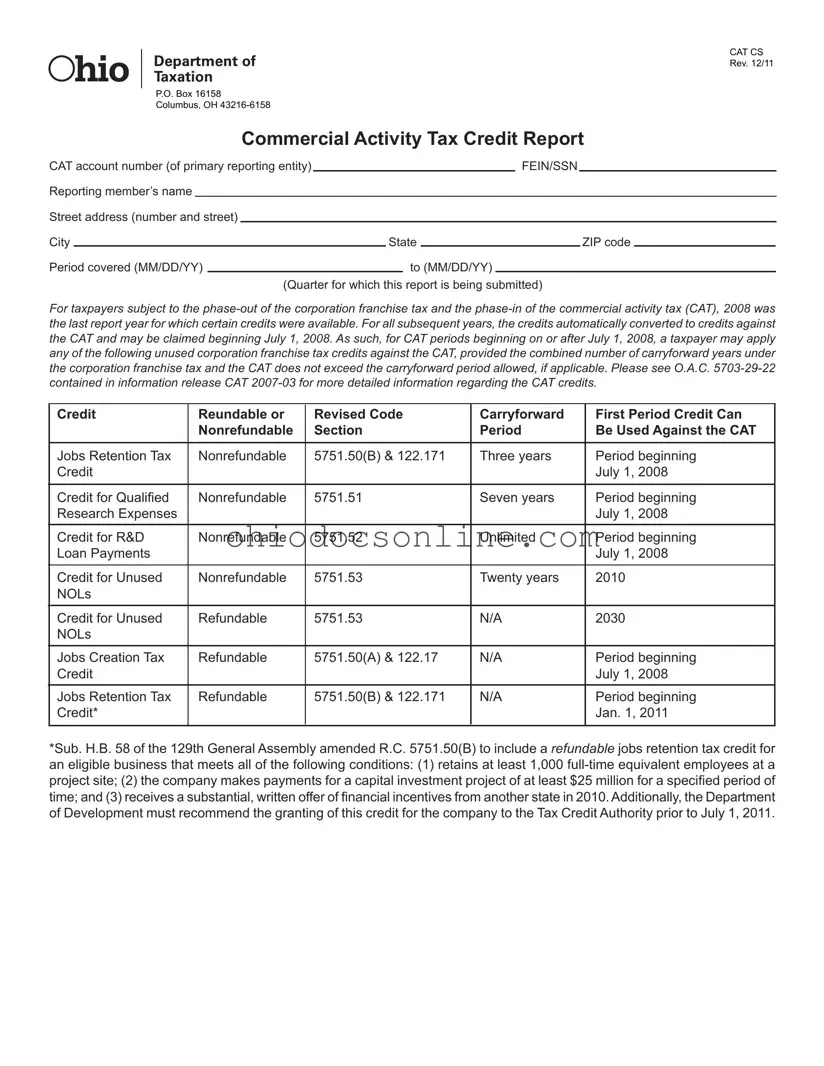Ohio Cat Cs Template in PDF
The Ohio Cat Cs form serves as the Commercial Activity Tax Credit Report for taxpayers in Ohio. This form allows businesses to report and claim eligible credits against the Commercial Activity Tax, particularly for periods starting July 1, 2008. It includes sections for detailing unused corporation franchise tax credits that can be applied to the CAT, along with necessary declarations and signatures.
Open Editor
